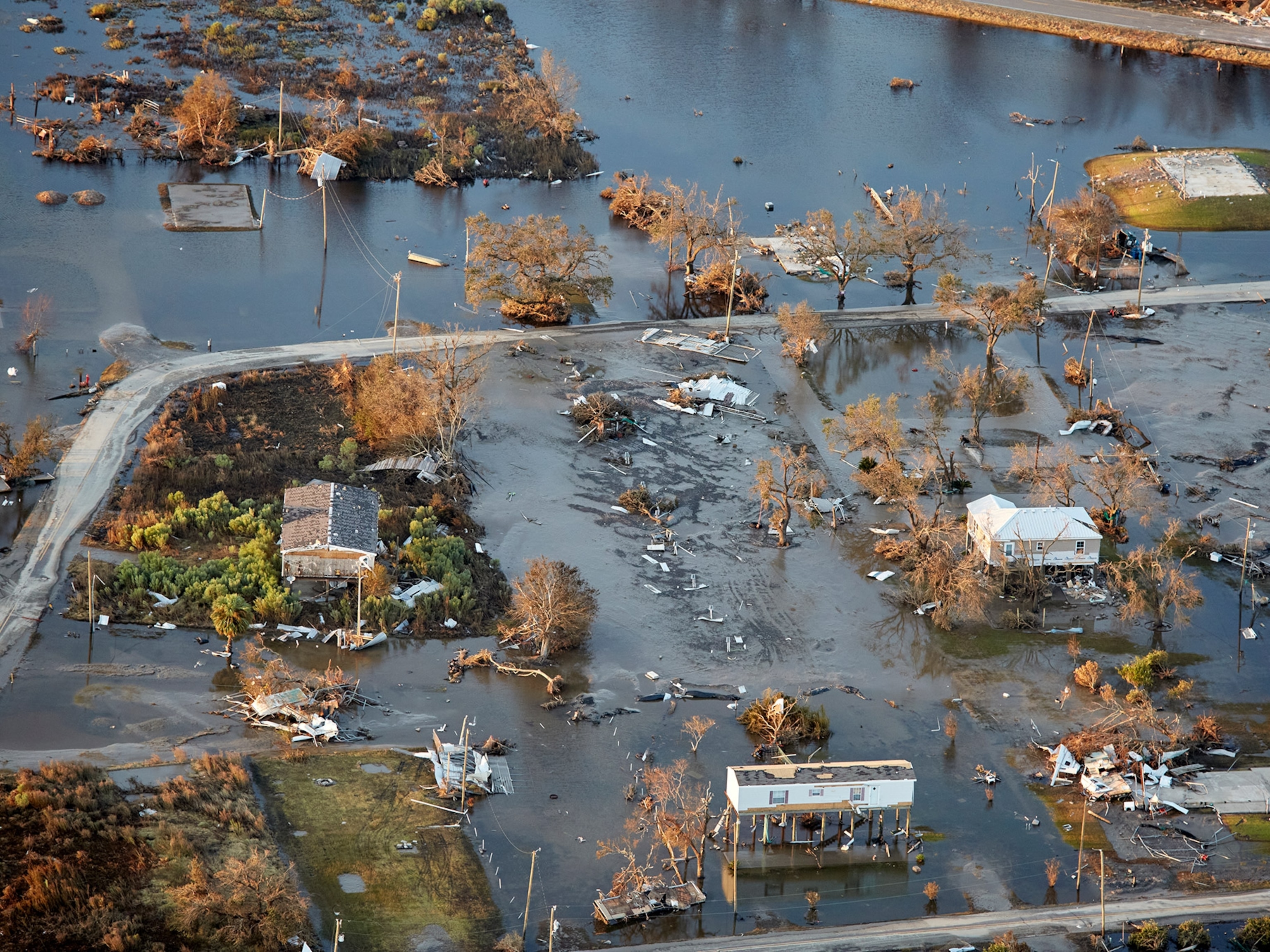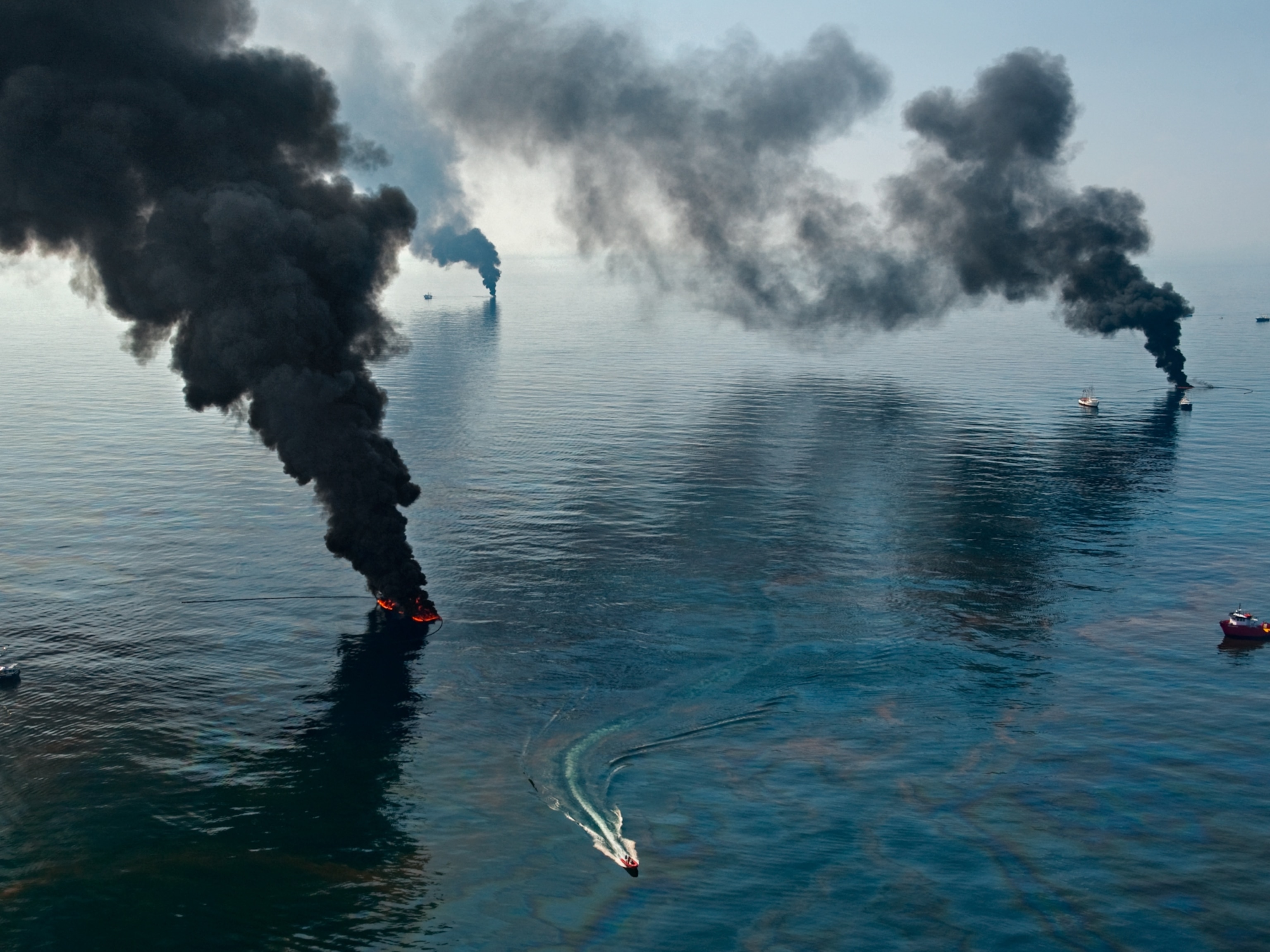Hurricanes Could Carry Gulf "Oil" Inland
As Atlantic hurricane season heats up, storms could send toxic hydrocarbons lingering from the Gulf of Mexico oil spill surging inland, scientists say. Video.
As Atlantic hurricane season heats up, storms could send toxic hydrocarbons lingering from the Gulf of Mexico oil spill surging inland, scientists say.
© 2010 National Geographic; partially funded by NSF
RELATED
Hurricane Could Push Spilled Gulf Oil Into New Orleans
Gulf Oil Spill News and Pictures
UNEDITED TRANSCRIPT
Could pollutants from the BP oil leak in the Gulf of Mexico end up as far north as New England?
That could happen if a hurricane or tropical storm hits the Gulf region and moves northward.
Siddhartha Mitra, Geochemist, East Carolina University
“On land, no one’s really though about the effect of material coming over from the ocean, marine areas onto land.”
Geochemist Sid Mitra, from East Carolina University, is studying how far hydrocarbons, released as the oil breaks apart -- and some of them toxic--, can reach inland.
Mitra was in the Gulf region recently, taking baseline readings for a long-term study.
Siddhartha Mitra, Geochemist, East Carolina University
“Once the air goes through the filters, and the plugs, and it passes out here, essentially everything we’re interested in that’s in the air is caught either on the filters or on these plugs.”
They’re sampling air and water BEFORE a hurricane strikes, then will return during and after a hurricane or tropical storm to take more readings.
What they’re looking for are hydrocarbons associated with the oil. They break away from oil into the air during evaporation, or burning, and also break away in the water, both naturally, and with dispersants applied to break up the oil..
Siddhartha Mitra, Geochemist, East Carolina University
“Any type of carbon molecules, carbon containing molecules, that are in the surface slick or surface areas of the Gulf of Mexico would be picked up by hurricanes and low pressure areas that go through the Gulf, and that material could also be dropped by precipitation on land further upland, away from the coast.
If the dispersant chemicals are mixed in, they could also be carried inland by rainfall and wind currents. If the material is toxic, there could be toxic effects.
“Oil and water don’t mix, in general. But many of the compounds that are in oil, start dissolving very readily. Those are the hydrocarbons, many of which are toxic at low concentrations.”
Inside a hurricane, bands of rain, drawn up from the ocean, meet in the eye wall, the most violent section. Here, winds of up to 200 miles per hour spiral upward, carrying moisture and any particles in the water. A fully formed hurricane can reach up to 500 miles in diameter, and while the winds diminish when it moves inland, the rain continues to fall as it moves northward into the United States.
“So our samples will be representative of the entire Lake Maurepas, not just one spot in Lake Maurepas.”
Mitra says the oil spill has created a sort of reverse problem that needs to be studied. Scientists are usually studying how pollutants go from land into the sea.
“There have been very few studies looking at how carbons, hydrocarbons, any material from the ocean, can make it up onto land. Most of us who study global carbon cycle, we worry about rivers draining material into the ocean.”
On this trip, Mitra took samples in Louisiana, Alabama and Mississippi and northward to North Carolina. The research is funded through the National Science Foundation.
Siddhartha Mitra, Geochemist, East Carolina University
“People who are living in upland areas, thinking I don’t need to be concerned much about the health effects of the oil spill, because I don’t live near the coast, If you have rain that has some of these hydrocarbons in it, many of which are toxic and carcinogenic, and hurricanes drop this rain in areas far north, upland areas of the Gulf states, sometimes hurricanes from the Gulf coast make it as far north as New England .. that rain could very well have these hydrocarbons in it, and essentially, dropping hydrocarbons along the way."
“It may not be raining oil, but it could be raining hydrocarbons that come from the oil in the Gulf of Mexico.”





